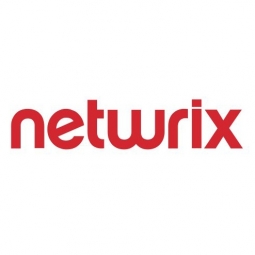Landspitali University Hospital Secures Medical Research and Data Protected by GDPR and Icelandic Privacy Law

Applicable Industries
- Healthcare & Hospitals
- National Security & Defense
Applicable Functions
- Product Research & Development
Use Cases
- Smart Campus
- Tamper Detection
Services
- System Integration
- Training
About The Customer
Landspitali, the National University Hospital of Iceland, is the country’s leading hospital and the largest workplace in healthcare, with around 6,000 employees. Landspitali serves three main roles: service to patients, teaching and training of clinical staff, and scientific research. The hospital offers diverse clinical services in outpatient clinics, day patient units, inpatient wards, critical care units, clinical laboratories, and other divisions. The hospital is committed to ensuring the security and privacy of its patients' and employees' data, in compliance with GDPR and Icelandic privacy laws.
The Challenge
Landspitali University Hospital was faced with the challenge of improving the security of patients’ and employees’ Personally Identifiable Information (PII) and Protected Health Information (PHI) to comply with the General Data Protection Regulation (GDPR) and the Icelandic Data Protection Act. This included ensuring that only authorized staff could access this data. The hospital also needed to secure other sensitive information, such as contracts, medical devices, and research documents, which was crucial for retaining the hospital’s research licenses and ensuring uninterrupted patient care. The hospital had to control 8,500 user objects daily, and the auditing process was time-consuming, taking up to 59 hours per audit.
The Solution
The hospital chose Netwrix Auditor as their solution. The system administrator at Landspitali, Auður Ester Guðlaugsdóttir, praised the system for its smooth operation and comprehensive audit data. The solution ensured the security of sensitive files, allowing the IT department to carefully audit activity that might involve sensitive data, including the personal data of patients or employees. The IT department could review daily activity across the IT infrastructure and also receive alerts about actions that could put data at risk. Netwrix Auditor also streamlined privilege attestations, enabling the IT team to provide accurate reports on access rights in less than an hour, a significant reduction from the previous 60 hours. The solution also enhanced control over Active Directory, providing visibility into what happens across Active Directory, which is at the heart of the hospital’s IT infrastructure.
Operational Impact
Quantitative Benefit

Case Study missing?
Start adding your own!
Register with your work email and create a new case study profile for your business.
Related Case Studies.

Case Study
Hospital Inventory Management
The hospital supply chain team is responsible for ensuring that the right medical supplies are readily available to clinicians when and where needed, and to do so in the most efficient manner possible. However, many of the systems and processes in use at the cancer center for supply chain management were not best suited to support these goals. Barcoding technology, a commonly used method for inventory management of medical supplies, is labor intensive, time consuming, does not provide real-time visibility into inventory levels and can be prone to error. Consequently, the lack of accurate and real-time visibility into inventory levels across multiple supply rooms in multiple hospital facilities creates additional inefficiency in the system causing over-ordering, hoarding, and wasted supplies. Other sources of waste and cost were also identified as candidates for improvement. Existing systems and processes did not provide adequate security for high-cost inventory within the hospital, which was another driver of cost. A lack of visibility into expiration dates for supplies resulted in supplies being wasted due to past expiry dates. Storage of supplies was also a key consideration given the location of the cancer center’s facilities in a dense urban setting, where space is always at a premium. In order to address the challenges outlined above, the hospital sought a solution that would provide real-time inventory information with high levels of accuracy, reduce the level of manual effort required and enable data driven decision making to ensure that the right supplies were readily available to clinicians in the right location at the right time.

Case Study
Gas Pipeline Monitoring System for Hospitals
This system integrator focuses on providing centralized gas pipeline monitoring systems for hospitals. The service they provide makes it possible for hospitals to reduce both maintenance and labor costs. Since hospitals may not have an existing network suitable for this type of system, GPRS communication provides an easy and ready-to-use solution for remote, distributed monitoring systems System Requirements - GPRS communication - Seamless connection with SCADA software - Simple, front-end control capability - Expandable I/O channels - Combine AI, DI, and DO channels

Case Study
Driving Digital Transformations for Vitro Diagnostic Medical Devices
Diagnostic devices play a vital role in helping to improve healthcare delivery. In fact, an estimated 60 percent of the world’s medical decisions are made with support from in vitrodiagnostics (IVD) solutions, such as those provided by Roche Diagnostics, an industry leader. As the demand for medical diagnostic services grows rapidly in hospitals and clinics across China, so does the market for IVD solutions. In addition, the typically high cost of these diagnostic devices means that comprehensive post-sales services are needed. Wanteed to improve three portions of thr IVD:1. Remotely monitor and manage IVD devices as fixed assets.2. Optimizing device availability with predictive maintenance.3. Recommending the best IVD solution for a customer’s needs.

Case Study
HaemoCloud Global Blood Management System
1) Deliver a connected digital product system to protect and increase the differentiated value of Haemonetics blood and plasma solutions. 2) Improve patient outcomes by increasing the efficiency of blood supply flows. 3) Navigate and satisfy a complex web of global regulatory compliance requirements. 4) Reduce costly and labor-intensive maintenance procedures.

Case Study
Cloud-based healthcare solution for Royal Philips
Royal Philips wanted to launch its cloud-based healthcare solution HealthSuite Digital Platform in China to deliver services to help cope with challenges related to urbanization and population growth. Philips wanted to achieve this goal by combining mobile, cloud computing and big data technologies. To bring this platform and product to market, Philips required cloud computing and local technical service capabilities in China, in addition to a flexible IT infrastructure that could handle user requests.







